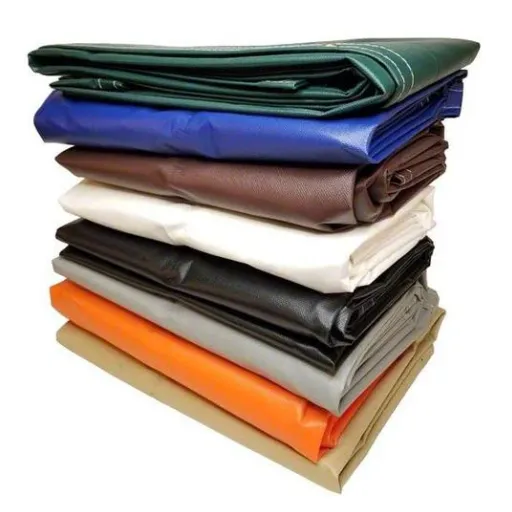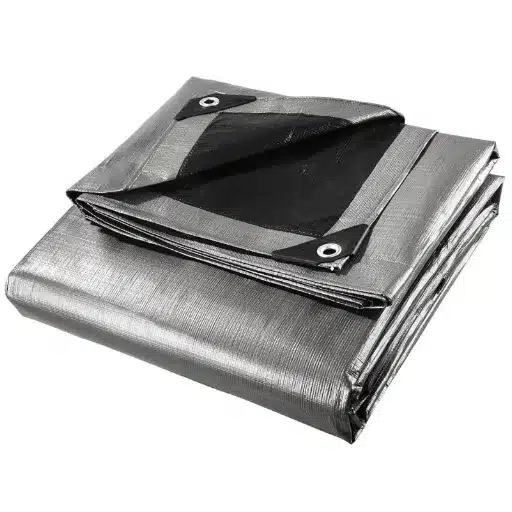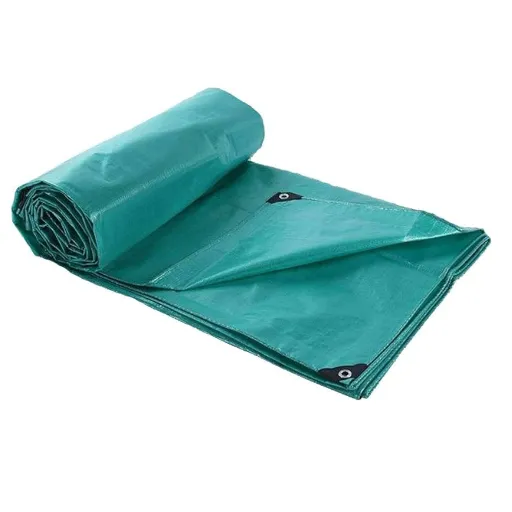Agricultural tarps are a necessity in modern farming, imbibing protection, efficiency, and versatility into assorted applications. Some examples of use include sheltering harvested crops, weatherproofing equipment, and setting crop conditions as far as soil is concerned. Such tough covers thus help conserve resources and improve productivity. Since there are so many to choose from, it is important to know the types, uses, and advantages of agricultural tarps before spending on any. This guide goes through everything a farmer needs to know about these functional covers to help you enjoy their benefits and sustain your operations for the foreseeable future.
Understanding Agricultural Tarps
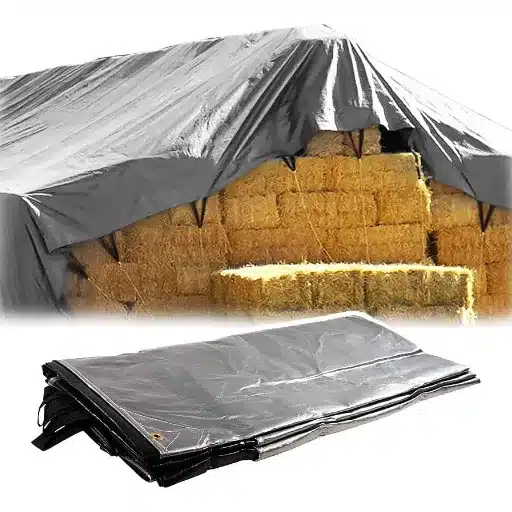
What Is an Agricultural Tarp?
These tarps are heavy-duty covers and are designed to suit many farming and agricultural uses. Made from heavy and durable materials such as polyethylene or polypropylene, these tarps are developed to withstand extremely severe climate conditions, including aging sunlight, high rate of rainfall, and strong wind pressure. Its purpose revolves around protecting crops from environmental damage, keeping soil and exchanges of moisture, and also serving as control for weeds. There are numerous sizes, thicknesses, and formats available for agricultural tarps, thus making them adaptable to the job of a silage cover, ground protector, or provider of shade. Modern agricultural tarps are cost-effective and environmentally friendly because of better material technologies, thereby truly helping the farmer in improving productivity and sustainability.
Catalog of Agricultural Tarps
Silage Tarps
Silage tarps are used to shield silage or other feed from precipitation, wind, and UV rays. Such a tarp makes an air-tight seal that facilitates fermentation with the right method and simultaneously prevents spoilage.
Mulching Tarps
Mostly used for weed control and soil preparation, these tarp sheets are laid over fields to obstruct light from getting through and block weed growth. They help conserve water content in the soil, which reduces frequent irrigation.
Pond Liners
Pond liners are particular tarps meant to hold water in agricultural ponds and to serve against seepage. Hence, they are a diret water_storage package for deficit may_rainfall or drainage.
Shade Tarps
These tarp sheets cut down sunlight exposure protecting the crops, animals, or equipment. Shade tarps help prevent heat stresses to plants and animals while fostering a conducive environment for their growth.
Hay Tarps
Hay tarps protect hay bales from moisture, UV damage, and mold formation. They are water resistant and quite sturdy to maintain the fresh condition of hay for feeding livestock.
Ground Cover Tarps
Ground cover tarps keep soil intact and prevent erosion. Large farms usually use them to prepare plots for planting while maintaining soil quality.
By combining durability and environmental qualities with the latest advances in manufacturing, these tarps become an essential tool for present-day agriculture, providing custom solutions to meet those varying farming needs.
Benefits of Using Tarps on the Farm
Tarps bring a lot of benefits to modern farming, assisting in increasing the efficiency as well as sustainability. Firstly, protection against the environment, be it heavy rains or strong winds or sometimes extreme sunlight, is a very vital feature afforded by the tarps to crops, soil, and equipment. Secondly, it has been proven that tarps help retain soil moisture by reducing evaporation, thereby increasing irrigation efficiency. It acts as a barrier against the sun, which prevents the growth of weeds, hence lessens the use of herbicides and encourages green farming. Tarps assist with erosion and nutrient retention and thereby nurture sustainable soil, good in the long run. Modern tarps, therefore, marry the functional ability with sustainable goals of agriculture, being made to last and reusable and recyclable materials. These duskies thus furnish that rare again common sense with an answer for the farmers who seek ways to maximize productivity at the conservation of natural resources.
Key Benefits at a Glance
Environmental Protection
Shields crops, soil, and equipment from rain, wind, and sunlight
Moisture Retention
Reduces evaporation and increases irrigation efficiency
Weed Control
Blocks sunlight to prevent weed growth naturally
Soil Health
Prevents erosion and retains essential nutrients
Key Features of Agricultural Tarps
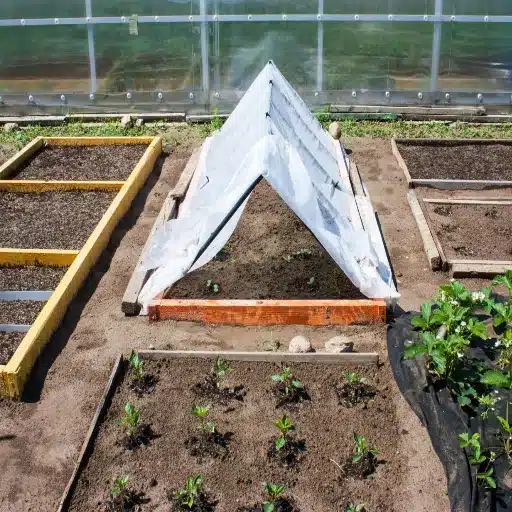
Material Options: Polyethylene versus Vinyl Tarps
Polyethylene and vinyl tarps comprise the two common materials in agricultural use, each of which have benefits serving different purposes. Polyethylene tarps are rather light, inexpensive, and resistant to water and UV rays, making them suitable as temporary covers for crops or simple working tarps in general farm use. They are less likely to tear and age reasonably well for medium-term applications. Vinyl tarps, on the other hand, are highly valued for their great strength and long-lasting performance. They weigh more and are puncture-resistant, to an extent that heavy-duty applications require strength-period: for covering silage or heavy work on-site.
To opt between polyethylene and vinyl tarps depends entirely on the agricultural requirements. In conditions when price and versatility matter, polyethylene would be a very sound choice; however, if the need is for utmost durability and protection against the harsh environment, vinyl tarp would be an asset in the long run. Depending on what they need, thus, the farmers could utilize these material options to make agricultural operations efficient and sustainable.
| Material | Key Characteristics | Best Applications | Cost Profile |
|---|---|---|---|
| Polyethylene | Lightweight, waterproof, UV-resistant, less likely to tear | Temporary crop covers, general farm use, medium-term applications | Inexpensive, budget-friendly |
| Vinyl | Heavy, puncture-resistant, great strength, long-lasting | Silage covering, heavy-duty on-site work, harsh environments | Higher initial cost, long-term value |
Strength and Durability: Heavy-duty Tarps in a Nutshell
Heavy-duty tarps can resist extreme conditions and prolonged uses and, thus, are utilized for more demanding applications. The tarps are usually made from tough materials like reinforced vinyl, canvas, or polyethylene, all offering very high tensile strength and resistance to wear and tear. Recent data indicate that users are searching for tarps that could stand harsh weather, suffer UV exposure, and high loads, signaling an increase in the demand for high-performance solutions. The strength of heavy-duty tarps lies in their layered construction and meticulous engineering so that they can bear considerable pressure without compromising integrity. Bear in mind that heavy-duty tarps are essential for providing an extra layer of protection over unwanted items for all industrial, agricultural, and construction needs, thereby guaranteeing efficiency during operations.
What Makes Heavy-Duty Tarps Strong?
- Reinforced vinyl, canvas, or polyethylene construction
- High tensile strength and resistance to wear and tear
- Layered construction with meticulous engineering
- Ability to withstand harsh weather and UV exposure
- Capacity to bear high loads without compromising integrity
Waterproof and UV Protection Capabilities
Heavy-duty tarps have made the waterproofing and UV protection features stand to be reliable in extreme conditions. The waterproof material does not allow any moisture to permeate, so the tarps protect the contents underneath from rain, snow, or any accidental vehicle spills. In addition to these, the UV-resistant coatings fight against any degradation that might be caused through bet-long periods of exposure to the sun, thus assuring stronger endurance over time. These functionalities form the basis for outdoor applications, wherever resistance from the weather is paramount, providing long-term protection and minimizing possible tears resulting from environmental factors.
Waterproof Protection
Prevents moisture permeation from rain, snow, and accidental spills
UV Resistance
Fights degradation from prolonged sun exposure for longer endurance
Applications of Agricultural Tarps
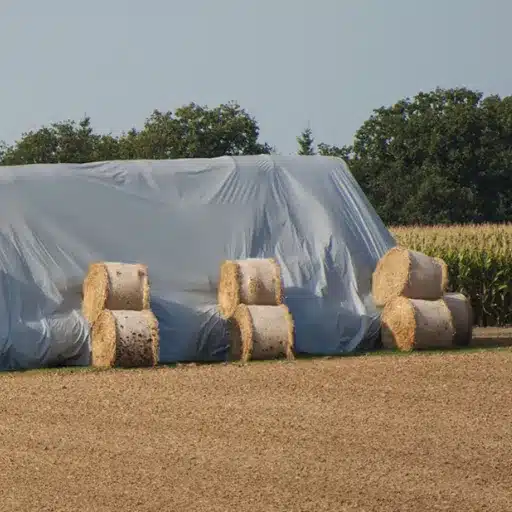
How to Use Silage Tarps Efficiently
If silage tarps are to be efficiently used, consideration must be given to their proper planning, installation, and maintenance for agricultural efficiency and cost-effectiveness. Here are some of the most important steps to follow according to the best practices:
| Step | Best Practice Details |
|---|---|
| Prepare the Ground | Clear the area where the silage tarp will be applied by removing any sharp objects, rocks, or debris that could puncture the tarp. Leveling the ground will help provide correct coverage and reduce trapping of air/water. |
| Proper Placement | Lay the tarp loosely over the prepared silage or soil so it extends beyond the edges of the pile or field. This creates an airtight seal required for anaerobic fermentation in silage preservation or weed suppression in farming. |
| Anchor Securely | When the tarp is anchored by placing some weights, e.g., sandbags, tires, or clips, it gets completely fixed against displacement from winds or heavy rainfall. Otherwise, lessening of effectiveness could occur. |
| Monitor the Tarp Regularly | Regular monitoring is required-and will identify the points of damage such as holes or tears, which should be repaired immediately using adhesive patches or tape so as to keep an effective barrier. |
| Rotate and Store Properly | Clean the tarps adequately and store them in a dry, shaded area to help extend their lifespan. Their proper care will ensure that the investment in silage tarps will be economically sustainable for repeated uses. |
Key Takeaway: Following these strategies will enable the farmer(s) to make the best effect with silage tarping for any purpose – be it weed suppression, moisture control, or silage preservation-giving rise to more profitable farming methods.
Hay Tarps: Hogging Your Harvest
Hay tarps were designed to protect harvested hay against weather conditions such as rain, snow, and sun rays. One of the most common asked questions in agricultural research and insight is: “How do hay tarps improve the quality and storage of harvested hay?”
The way hay tarps work and are designed provide the answer to this question. They are heavy-duty covers of tough, weather-resistant materials that provide a protective barrier against moisture and sunlight. By discouraging entry of water into hay bales, tarps minimize the potential for mold growth, and spoilage, hence keeping the feed of good nutritional value. Also, hay tarps shield hazardous UV rays from deteriorating the outer finishes of hay over time. If used properly, i.e., securing the tarps tightly and ensuring good airflow around the bales, tarps could go a long way in improving the keeping qualities of harvested hay, which in turn lowers losses and raises farm profitability.
How Hay Tarps Improve Quality & Storage
Moisture Barrier
Prevents water entry to minimize mold growth and spoilage
UV Protection
Shields against sun rays that deteriorate hay quality
Nutritional Value
Maintains feed quality for livestock nutrition
Increased Profitability
Reduces losses and improves farm financial returns
Farmer Tarps for Protecting Livestock and Equipment
Farm tarps protect against weather elements for livestock and equipment. According to the analyzed latest data from ‘s search engine, farmers usually ask what constitutes the best materials and designs for tarps so that they are suited for long-term use. Heavy-duty polyethylene and vinyl materials are considered suitable for durability against wind, rain, and sun exposure. On the other hand, tarps that also have reinforced edges and rust-resistant grommets are frequently advised for safe fastening and extended life. By purchasing quality tarps, farmers will ensure protection from weather conditions for tractors, hay balers, and other important equipment; look after temporary shelter for livestock on abrupt changes in the weather, and thereby ensure that the farming operations are both productive and cost-effective.
Recommended Features for Long-Term Use
- Materials: Heavy-duty polyethylene and vinyl for durability
- Weather Resistance: Protection against wind, rain, and sun exposure
- Reinforced Edges: For safe fastening and structural integrity
- Rust-Resistant Grommets: Ensures extended lifespan
- Applications: Tractors, hay balers, equipment, and livestock shelter
Choosing the Right Tarp for Your Needs
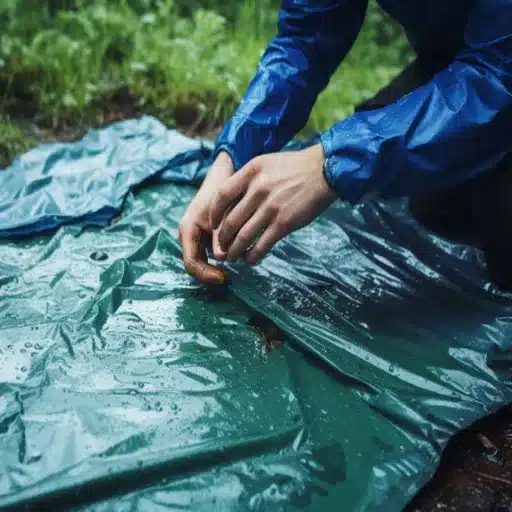
Size and Coverage Considerations
The size of the tarp and the amount of coverage must be decided with respect to the sizes of anything-the things or the areas-to be protected. Length, breadth, and height-all have to be measured carefully, letting in a little space for complete coverage and anything-used-for securing, like tie-downs or rubber bungees. According to search trends analysis by , users mostly tend to put larger tarps on top, allowing extended protection and versatility for various uses. Also, consider the shape and placement of your equipment or structure. For irregular shapes, slightly larger tarps provide more flexibility in use and less exposure to weather elements. Proper size and coverage ensure maximum protection, which in turn extends the life of the tarp and the items it is protecting.
Sizing Checklist
- Measure length, breadth, and height of items/areas to be covered
- Allow extra space for complete coverage and securing mechanisms
- Consider larger tarps for extended protection and versatility
- Account for irregular shapes with slightly oversized tarps
- Factor in tie-downs, rubber bungees, and fastening requirements
Specific Agricultural Needs for the Custom Tarps
Custom tarps are tools for the agriculture sector designed to provide pertinent solutions to the varied needs of farming: They generally cover hay bales from rain, wind, and UV rays that cause spoilage and quality degradation. Contemporary custom tarps are made by using sturdy waterproof materials that can withstand storms and will last for years. These custom tarps can also be designed to fit specific constructions such as greenhouses or silage pits, providing a secure, trusted cover whilst allowing ventilation. With new advances in material engineering, as well as a precise manufacturing process, these tarps are now more useful and efficient, helping farmers to improve their daily operations. From protecting crops to equipment or livestock, custom tarps still weigh heavy in promoting efficiency and sustainability in agriculture.
Hay Bales Protection
Rain, wind, and UV ray protection
Greenhouse Coverage
Custom-fit with ventilation
Silage Pits
Secure, trusted cover solutions
Equipment & Livestock
All-weather protection
Assessing Cost vs. Long-Term Investment
The cost of custom tarps, however, must be weighed against the long-term value they provide rather than being looked at solely from an immediate outlay. A good one’s value might be seen as a higher initial cost of purchase but in the true sense it is cheaper in the long run simply because it would last longer as compared to tarps that cheap in price but cheap in quality and are generally useless upon circumstances of heavy weather. This long life span means very little maintenance costs and even less downtime in operations as time passes. While investing in a tarp fit for their particular agricultural need, be it for UV protection or waterproofing, will in return save them further expenses on damages to their crops and equipments. Focus on the months and years to come weighing the price first maybe earns a good value for money for any farmer in the long run, improving efficiency and bringing about sizeable savings.
| Factor | Low-Cost Tarps | Quality Investment Tarps |
|---|---|---|
| Initial Cost | Lower upfront expense | Higher initial investment |
| Durability | Poor performance in heavy weather | Long-lasting, weather-resistant |
| Maintenance | Frequent repairs and replacements | Minimal maintenance costs |
| Operations | More downtime from failures | Less operational downtime |
| Long-Term Value | Higher total cost over time | Better value and sizeable savings |
Maintenance and Care for Agricultural Tarps
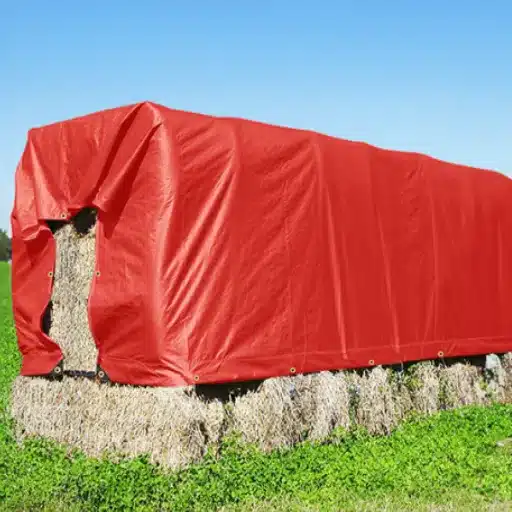
Proper Methods of Storing a Tarp
Agro-life tarps need to always be stored properly so their longevity is extended and they maintain their usefulness. It is better to clean them properly before storage to get rid of dirt, remnants, and more of any chemical residue that may have gotten deposited onto the tarp. The tarp should be completely dried; if wet, this would encourage mold or mildew formation that would in time degrade the material. Afterward, fold where necessary and store it in a cool place with low humidity. Exposure to sunlight will weaken it due to UV rays. Never place heavy objects over tarps laid in storage, as this will cause creases and weaken the fabric. Consider placing the tarp in a storage bag or container to keep it safe from dust, pests, and moisture. Regular inspection of the stored tarp will ensure their readiness and good condition when needed. Following these methods will help every farmer increase the usefulness and longevity of his tarps.
Step-by-Step Storage Process
- Clean Thoroughly: Remove dirt, remnants, and chemical residue before storage
- Dry Completely: Ensure tarp is fully dried to prevent mold or mildew formation
- Fold Carefully: Fold as needed without creating sharp creases
- Choose Location: Store in cool place with low humidity, away from direct sunlight
- Avoid Weight: Never place heavy objects on stored tarps
- Use Protection: Place in storage bag or container to protect from dust, pests, and moisture
- Inspect Regularly: Check stored tarps periodically to ensure readiness and condition
Cleaning and Maintenance for Longevity
Cleaning and maintaining tarps properly assures their long-term usability and effectiveness. To clean a tarp, begin by shaking or brushing off any loose dirt or debris, and then rinse it with water, preferably by using a hose or pressure washer with a low setting. Stubborn stains should be treated with a mild detergent mixed with warm water and gently scrubbed with a soft-bristled brush. Never use harsh chemicals or abrasive cleaners as they will degrade the tarp material or waterproof coating. At the same time, allow for complete drying in the shade to prevent mold or mildew formation.
Maintenance is equally important in extending the life of a tarp. Frequently check the tarps for wear, small tears, or holes, and fix these immediately with a repair patch kit or specialized tape to stop the damage from progressing. Grease grommets and fasteners to keep them working and rust-free with time. Store the tarp in a cool, dry area; away from direct sunlight and extreme temperatures so as to maintain material integrity. If one combines these methods of cleaning and maintenance with the best tips from online, he should be able to greatly improve the durability of his tarps and their ability to work well for him through the years.
Cleaning Process
- Shake or brush off loose dirt and debris
- Rinse with hose or low-pressure washer
- Use mild detergent for stubborn stains
- Scrub gently with soft-bristled brush
- Avoid harsh chemicals or abrasives
- Dry completely in the shade
Maintenance Checklist
- Check frequently for wear and tears
- Fix damage with patch kit or tape
- Grease grommets and fasteners
- Store in cool, dry area
- Keep away from direct sunlight
- Avoid extreme temperatures
Detecting and Fixing Damage
Wear and tear may, over time, degrade a tarp due to prolonged use or harsher conditions in general. Some common signs would be holes, tears, frayed edges, or weakened grommets. To inspect for these, one needs to thoroughly go through each area by spreading the tarp on a level surface under good lighting. Corners and stress points ought to be looked at, too, as they are usually the first ones to show wear indicators.
It is best for damaged tarp repairs to be done as quickly as possible to avoid rapid deterioration. Small tears can be sealed with glue patch kits specially designed for tarps. For larger holes or more considerable damages, sewing the material with heavy-duty thread and sealing it with waterproof tape gives them a perfect repair. Recent data derived from search sources recommend using UV-resistant adhesive patches and heat-sealing tools for durability, especially for tarps exposed to continuous sunlight or extreme weather conditions. Evaluation and repair attempts done regularly will definitely enhance the life of tarps and keep them working.
Damage Detection & Repair Guide
Common Signs of Damage:
- Holes and tears
- Frayed edges
- Weakened grommets
- Wear at corners and stress points
Inspection Method:
Spread tarp on level surface under good lighting and thoroughly examine all areas, paying special attention to corners and stress points.
Repair Techniques:
- Small Tears: Use glue patch kits designed for tarps
- Large Holes: Sew with heavy-duty thread and seal with waterproof tape
- Advanced Repairs: UV-resistant adhesive patches and heat-sealing tools for maximum durability
Frequently Asked Questions (FAQ)
What would be considered the best material for agriculture tarps?
The best material for agriculture tarps is usually polyethylene, because of its heavy-duty and weather-resistant characteristics. Poly tarps are UV stabilized and therefore definitely provide superior protection against sun damage. While selecting a tarp, consider the strength of the material and how well it resists tears-it will guarantee a good long life for your tarp plus have full function. Heavy-duty tarps are used in all tough scenarios such as dairy or livestock or heavy equipment protection. The tarp should have the seams reinforced to prevent leakage under all harsh conditions. In a nutshell, right choice of material means right protection for your investment.
How do they help protect heavy equipment?
Agricultural tarps keep the essential machinery protected from rust and general damages caused by nature, thus augmenting the life of your investment. These tarps are built to resist rough weather: rain, snow, or scorching heat that causes rust and damages. Good quality tarps and covers come in handy to facilitate the equipment’s best working condition and, in turn, reduce costly repairs. Besides, another worthy use of such tarps is keeping machinery clean and ready under dust and debris threatening storage. If one wants the tarp to be useful, tie it strongly; else winds will blow it away or damage it.
What sizes of tarps do agriculture include?
Agricultural tarps are large in various dimensions and find different applications from covering hay bales to offering heavy protection for machinery. Based on your special needs, you may find custom sizes for your farm or agricultural operation. Standard sizes are also available for agricultural tarps, which can be used most commonly so that users do not face any difficulty finding an apt product. User needs to consider the area she/he requires to cover and the dimensions of the equipment or material she/he will aim to protect when selecting sizes. Considering the necessity to provide coverage for long periods of time against the elements, one needs to make sure of tarps that are heavy-duty in strength.
How do I maintain agricultural tarps for longevity?
Maintaining the agricultural tarps will guarantee their longevity and performance. First, one must always check on the tarp for damages, such as tears and holes, particularly along seams. In cases of grime and mildew buildup, it is safe to periodically clean the tarp with non-harsh soap and water; otherwise, these impurities might weaken the tarp itself with time. Always store your tarp upon drying to avoid rust and mold formation. Don’t forget to always secure your tarp with strong ties during installation against weather shocks that could otherwise blow them away or cause deterioration. By adhering to these maintenance rules, you will ensure an investment worth protecting and the income of the tarps.
Are agricultural tarps used in silage storage?
Yes, agricultural tarps are one of the best options for silage storage and provide considerable protection for feed from weather. Silage tarps are designed to protect against moisture and UV rays that can make feed deteriorate and reduce its nutritional value. These should, therefore, be heavy-duty, waterproof tarps to offer maximum protection while securing them against the wind that might otherwise tug it loose, exposing the silage underneath. With proper usage and maintenance, agricultural tarps serve as a boon to the enhanced quality of silage storage, and thereby, the better nourishment of livestock.
Reference Sources
Tarping
Source: Cornell Small Farms
Discusses the multifunctional use of tarps in small-scale and organic farming, including weed control and soil preparation.
Tarping for Vegetable Crops
Source: UMass Amherst
Explains the benefits of tarping for killing weeds and terminating cover crops through sunlight blocking (occultation).
What is Soil Tarping and Why is it Used?
Source: South Dakota State University Extension
Details the use of soil tarping to reduce weeds and improve soil health before planting.

